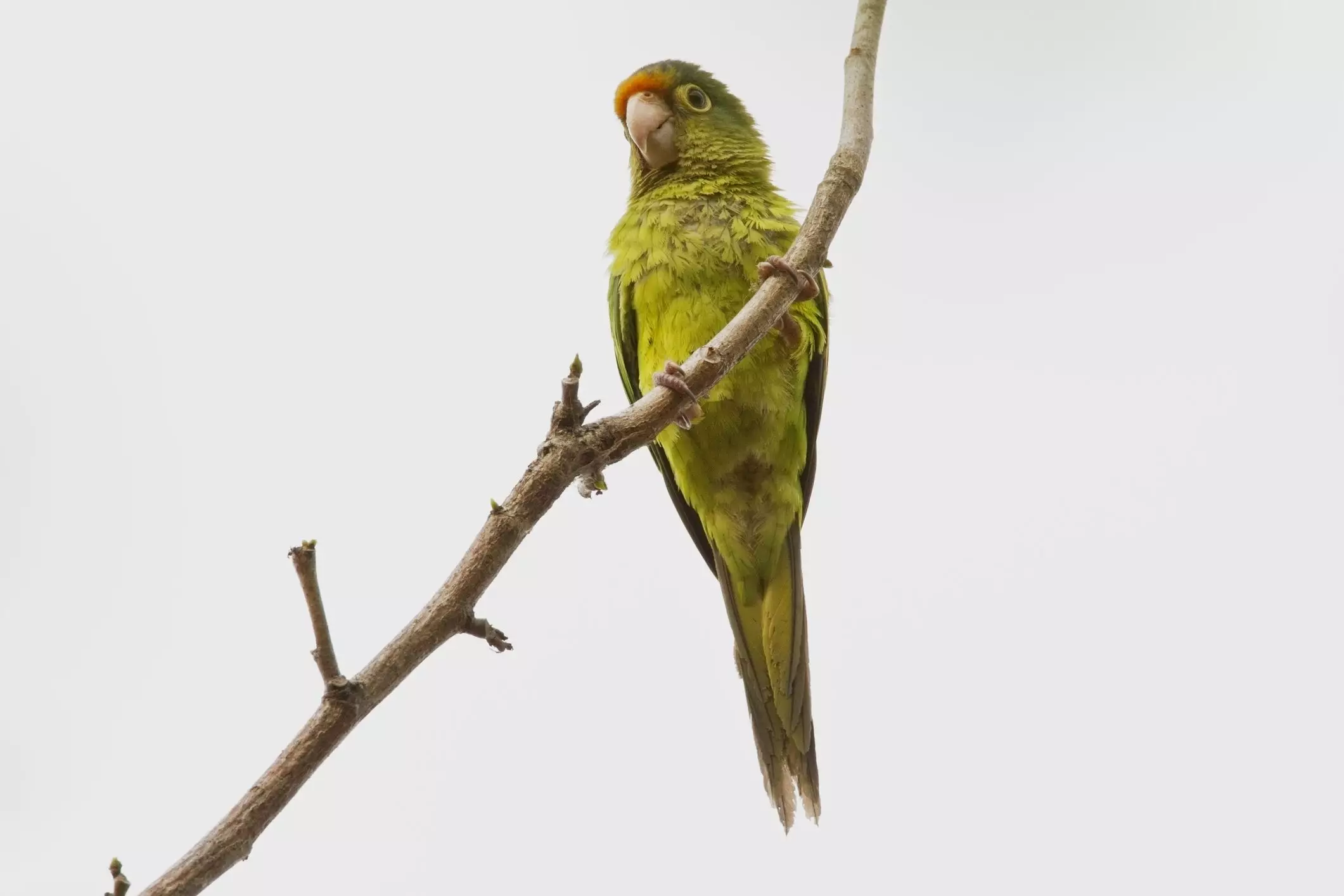Half-moon conures, also known as Eupsittula canicularis, are charming and vibrant medium-sized parrots that come with a distinct collection of traits, making them a fascinating choice for avian enthusiasts. In this article, we will delve deeper into their characteristics, behaviors, and the necessary caretaking skills required to keep these engaging pets mentally and physically stimulated.
Native primarily to the tropical regions of Mexico and Costa Rica, half-moon conures thrive in various habitats, from dense tropical forests to open savannahs. This species typically forms large flocks, often exceeding a hundred individuals, except during their mating season when they pair off. Their choice of nesting sites is particularly intriguing, as they often opt for termite mounds or old woodpecker holes, showcasing their adaptability and unique nesting behaviors.
Weighing around 75 grams and measuring approximately 9.5 inches in length, half-moon conures are known for their stunning plumage. These birds primarily display a bright green hue, with emerald green accents on their wings and back, an orange band just above their beak, and a distinguished blue forehead. Importantly, both males and females exhibit similar color patterns, which can make visual identification quite a challenge.
The Personality of Half-Moon Conures
Half-moon conures possess an engaging and lively personality that makes them appealing as companions. While they are somewhat quieter than other conure varieties, they still require ample social interaction, mental stimulation, and exercise. An adequately socialized half-moon conure will delight in human company, often forming strong bonds with their owners. Their playful and gentle nature can be incredibly enjoyable, although it is essential to note that they may engage in playful mischief, necessitating regular supervision.
These birds are less likely to be destructive compared to some larger parrot species, although they will still need plenty of safe toys and climbing structures to keep them entertained. Unlike some parrots that enjoy bathing, half-moon conures might prefer an occasional misting with water, adding to their unique quirks.
Dietary Needs of Half-Moon Conures
Feeding half-moon conures caniculiaris a balanced and appropriate diet is vital for maintaining their health and well-being. A high-quality formulated bird pellet should serve as the base of their diet, supplemented with fresh fruits, vegetables, and healthy treats. Providing a variety of fruits and vegetables daily not only ensures they receive essential nutrients but also keeps their diet exciting.
Popular choices for treats include sugar-free cereals, cooked pasta, and whole-grain bread. Caution is necessary with the seeds, as they should only supplement their primary diet due to high-fat levels, which may lead to obesity. The balance between commercial pellets and fresh food is crucial for avoiding dietary-related health issues.
The health of a half-moon conure can often be an overlooked aspect of their caretaking. Birds can be notorious for hiding their illnesses, making regular veterinary check-ups essential. Common health complications for this species can include respiratory issues such as pneumonia and aspergillosis, often linked to environmental conditions. A clean habitat and proper nutrition can help mitigate these risks.
Moreover, half-moon conures are susceptible to liver problems and behavioral issues arising from inadequate diets and restricted living conditions. Thus, creating a stimulating and hygienic environment should be a priority for any bird owner.
To thrive, half-moon conures need ample space to exercise and explore. While a cage can adequately keep them secure when supervision is impossible, these birds benefit tremendously from having free time outside their cages. Establishing safe flight zones, play gyms, and climbing structures are necessary to ensure they interact and exercise regularly.
A well-structured routine that incorporates social playtime, safe exploratory activities, and interaction with their owners can do wonders for a half-moon conure’s mental state. Potential pet owners should be prepared to commit to providing a stimulating living environment; anything less could lead to boredom and behavioral issues.
Unlike more popular pet bird species, half-moon conures might require some extra effort to find. They can sometimes be located in specialized bird stores or larger pet retailers, but the most reliable source will often be reputable breeders or rescue organizations. Engaging with local avian veterinarians, bird shops, and online platforms like PetFinder.com can yield useful leads in locating these delightful birds.
Half-moon conures are a captivating choice for those seeking a medium-sized parrot with an affable personality. Understanding their social and dietary needs, alongside providing a stimulating environment, ensures that these birds thrive in a domestic setting. With the right dedication, a half-moon conure can become a cherished and beloved companion for many years.

